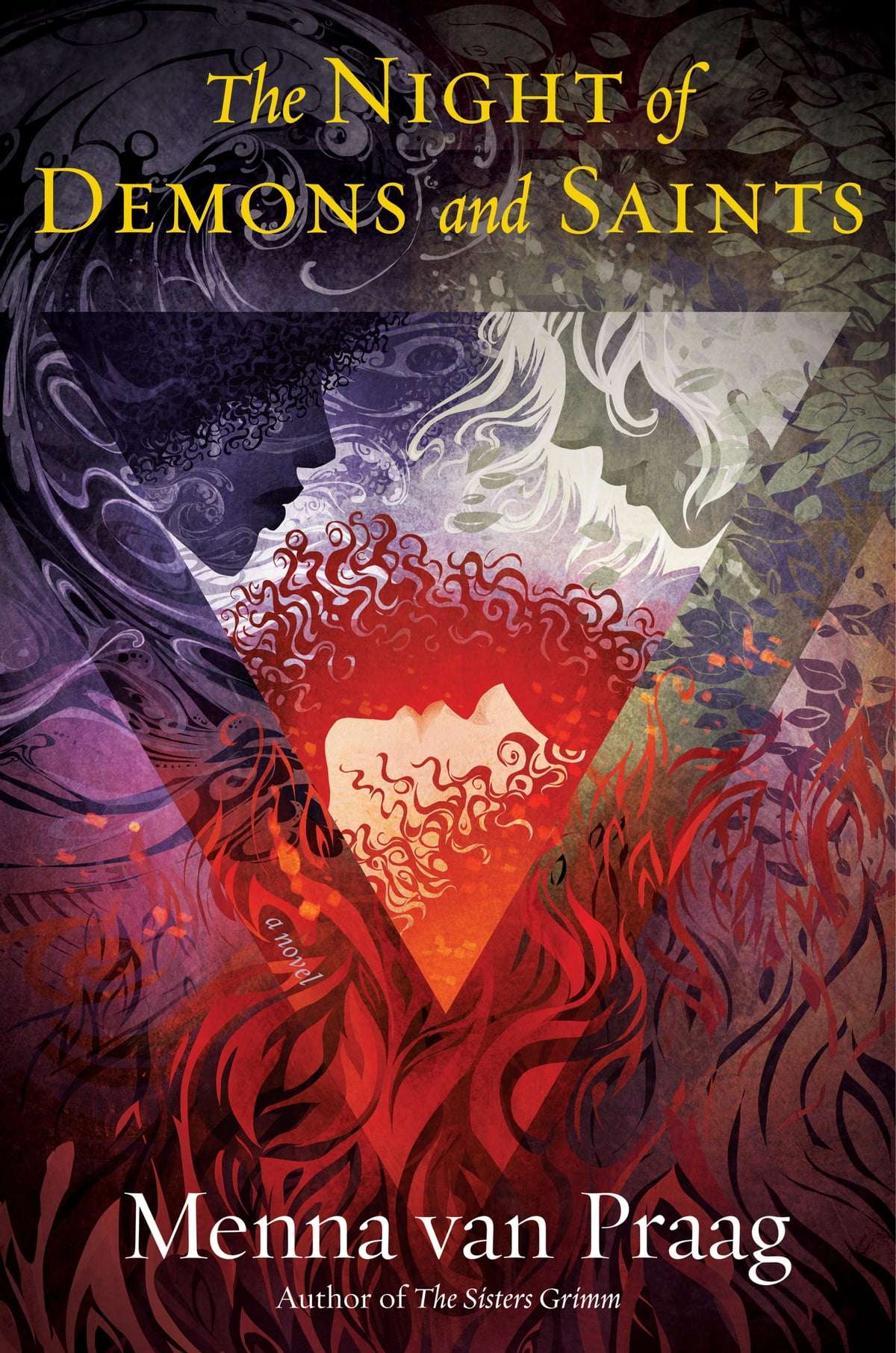We continue our November celebration of the launch of book two in Menna van Praag’s Sisters Grimm series with Sharon’s review of The Night of Demons and Saints. Be sure to pick up your copy right here. We conclude our coverage next week by sitting down with Menna in an exclusive interview you don’t want to miss!
Into Everwhere
‘I’m not a witch,’ she says. ‘I’m a Grimm.’
In 2020, Menna van Praag, author of the critically acclaimed The House at the End of Hope Street, published the first book of a new duology: The Sisters Grimm. In it, we were introduced to the ethereal realm of Everwhere, running adjacent to our own world, where females imbued with elemental magic could find sanctuary with their sisters…for the most part.
The book follows four sisters of the same father but different mothers, born at the same moment, each possessing elemental magics: Goldie, of earth and growing things; Scarlet, of fire and warmth; Liyana, of water and strength; and Bea, of air and mystery. The girls find each other through the London portal to Everwhere, and together, overcome a horrific personal challenge that threatens not only their lives but the existence of Everwhere and even the mundane world outside the magical portals.
The Night of Demons and Saints takes place three years later, and we quickly learn that although the sisters have triumphed, they definitely are not living happily ever after – because life is truly not a fairy tale. Each sister is carrying her own burden of loss and tribulation. And not only has each one borne great losses, they now seem to have lost the spark of creation that was cradled at the core of each of them. Creation still exists, but it is aimless, inert; even strangely, unwelcome.
Then, three days before their shared 21st birthday on October 31st, Goldie is given a shocking revelation: at the very moment she turns 21, she may be strong enough to resurrect the man who died to save her and her sisters three years earlier; her beloved Leo, without whom she still feels broken and adrift. But the question lingers – at what cost?
Not Your Average Fairy Tale
Just like the stories from the Brothers Grimm, this Sisters Grimm series is not made up of Disney princesses, rainbows, and puppies. The Night of Demons and Saints deals with some very dark issues, including toxic masculinity, gaslighting, emotional manipulation, suicide, violent revenge, and questions of ethical responsibility. People in these stories do terrible things, and it’s hard at times to establish who is heroic and who is demonic; how much can be attributed to manipulation, and how much to listen to the darker side of who you are.
But it also has grace and beauty, and above all, the safety net of a unified sisterhood. The moral ambiguity that Goldie, Scarlett, and Liyana face (not so much Bea; she’s always been content with her darker side) are akin to what we see in our lives, in what we experience. The situations are not so much different than ours – just the means by which to confront them, which can also be very dark and very frightening.
But the sisters have each other (although they also can bicker and complain as sisters are wont to do!), and they can serve as a conscience and sounding board when any one of them feels overwhelmed and beaten down. But again, no fairy tales – there is the aspect of despair when you see someone you love turning down a dangerous path, or the frustration of confronting apathy, of being unable to force someone to see beyond their own depression and lack of self-worth. The dynamic between the sisters is indeed complex – and eminently relatable.
Adjunct Stories
Scattered throughout the narrative are shorter adjunct stories, ostensibly penned by Goldie, but according to her, arising spontaneously. “The words unfurl across the page as quickly as if she’s taking dictation….”. These stories have the feel of fables or even morality tales and give the overall narrative an even more magical tone (they were actually co-written by the author’s mother). The stories don’t necessarily teach but give insight – although who they are intended for is not always obvious. Or if intentions even matter.
If you like your magical realism to be rooted in the real world but to wander boldly in the fantastical, and if you like your heroines to be both virtuous and troubled, if you enjoy when women carry not only the bones but the meat of the story and you are willing to embrace both disbelief and familiarity, then you will enjoy The Night of Demons and Saints.
—Sharon Browning


